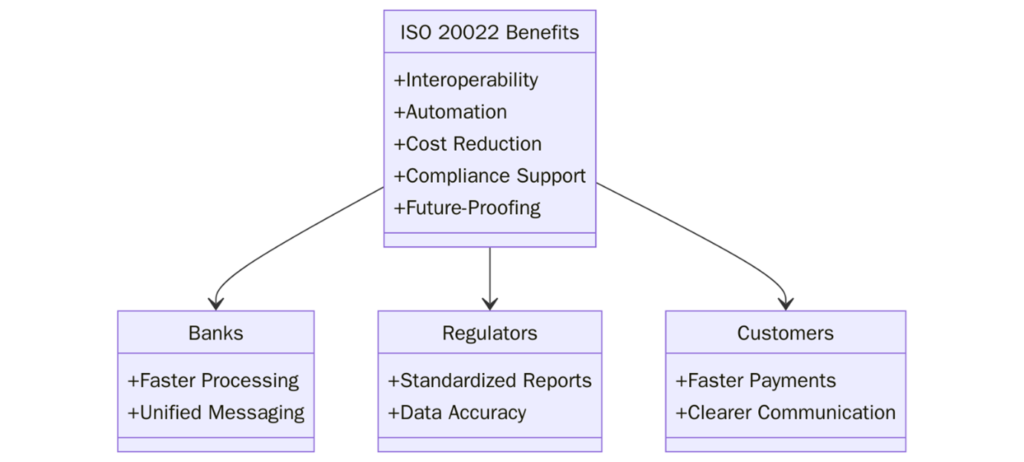ISO 20022-1:2013 is the first part of the standard series that establishes a universal messaging methodology for financial services. Part 1 defines the metamodel, which forms the foundational framework for modeling business processes and data across banking, securities, payments, foreign exchange and trade services.

The metamodel serves as a conceptual blueprint for structuring financial messaging in a consistent and technology-neutral format. It ensures that different financial institutions and market infrastructures, despite differing systems or platforms can exchange standardized and semantically precise messages.
With global initiatives such as SWIFT’s migration to ISO 20022 and regulatory pushes by ECB, Fedwire, CHAPS, and TARGET2, is now a strategic cornerstone of global financial messaging modernization.
Need help understanding or aligning with this standard? Contact us at support@pacificcert.com!
ISO 20022-1:2013 applies to:
This part of the standard provides a shared syntax and semantic structure for modeling all business transactions before converting them into XML schemas or other syntax for message exchange.
If your systems rely on structured financial messaging, this standard is foundational.
The ISO 20022 standard is composed of multiple parts:
Part | Title |
1 | Metamodel |
2 | UML Profile for ISO 20022 |
3 | Modeling Rules |
4 | XML Schema Generation Rules |
5 | Reverse Engineering Rules for Messaging |
6 | Message Transport Characteristics |
Part 1, the metamodel, underpins all other parts by defining the logical relationships and modeling conventions between business processes, components, and messages.
To know more, contact us at suopport@pacificcert.com!
The ISO 20022 metamodel provides a standardized way to represent financial business processes and message content. It includes abstract models and formal relationships between concepts such as:
This allows diverse systems to build messages with harmonized data structures, regardless of geography, language, or platform.
Metamodel-driven design ensures:
Need help modeling messages using metamodel? Contact us at support@pacificcert.com.
Implementing ISO 20022-1:2013 begins with understanding your organization’s messaging needs and existing infrastructure. Institutions should:

For large banks or payment service providers, implementation is often done in phases, starting with high-value payments or regulatory reporting, then expanding to securities and trade finance.
When implementing ISO 20022-1:2013, organizations should maintain:
Need a documentation framework? We offer templates and guidance—email support@pacificcert.com.

It has become the global standard for financial messaging, with adoption accelerating across:
According to SWIFT, over 80% of global high-value payments will be ISO 20022-compliant by mid-2025.
Want to ensure your systems are ready? Reach us at support@pacificcert.com.
We offer tailored support for financial institutions implementing ISO 20022 standards:
From national banks to fintech startups, we help make ISO 20022 implementation successful and sustainable.
Begin your journey with our expert team—contact support@pacificcert.com!
While not mandatory globally, many central banks and financial networks have made ISO 20022 adoption mandatory.
It is the conceptual structure used to model all ISO 20022-compliant financial messages in a consistent and interoperable way.
Yes, but it is often implemented alongside messaging tools, regulatory systems, and service frameworks.
No. XML is one syntax. ISO 20022 defines the semantic and logical model. Messages can also be implemented in JSON or other syntaxes.
Through the official ISO 20022 Repository hosted by SWIFT.
Contact Pacific Certifications to begin your certification journey today!
Suggested Certifications –
Read more: Pacific Blogs

Get in touch!
This will close in 0 seconds
Get in touch!
This will close in 0 seconds
WhatsApp us